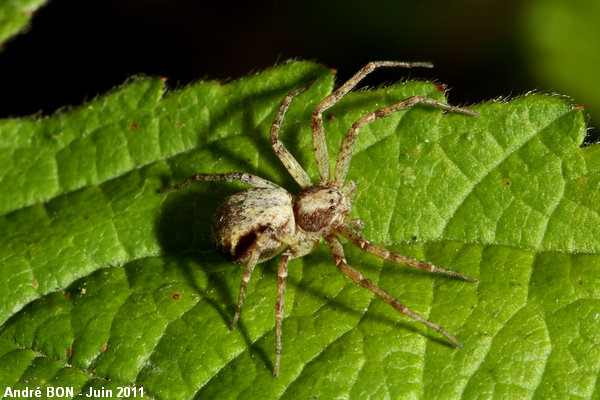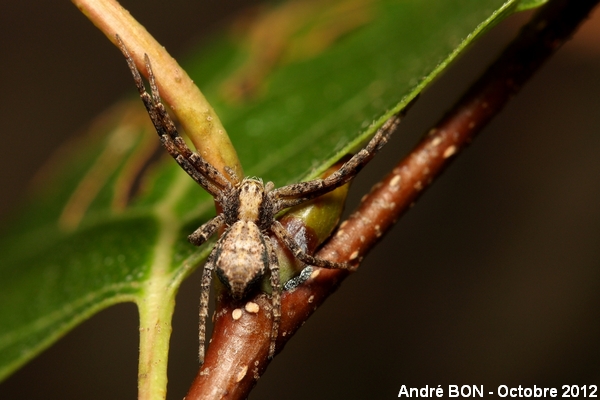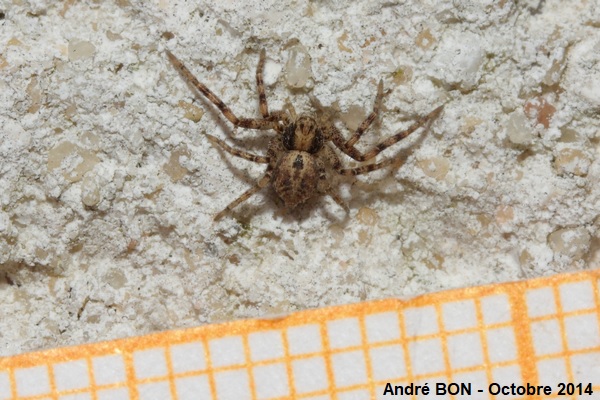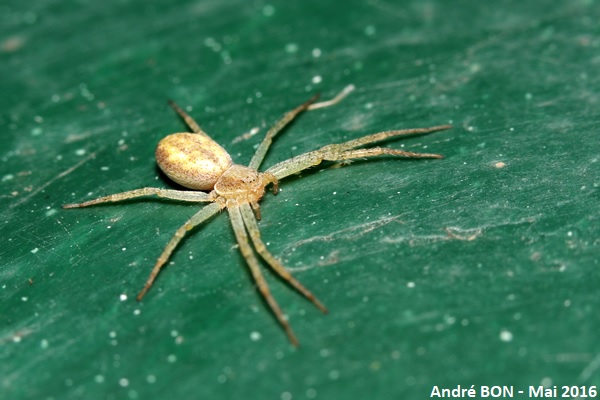



| Philodromus sp. (Walckenaer, 1826) |




|
|
Scientific name: Philodromus sp. (Walckenaer, 1826) Common name: French name: Order: Araneae Family: Philodromidae Size: 3 to 7 mm. Biotope: Low growing vegetation. Deciduous or coniferous forests. Web: No web. These spiders are used to sitting in wait for preys, they are able to move very fast and to make sudden jumps. Observation period: All year Geographic area: The Philodromus genus is represented on all continents except in the polar regions. There are about 250 species worldwide. I have found 59 species listed in Europe with 29 species listed in France. |
The spiders of the Philodromus genus have a flattened and moderately elongated body, and all legs are approximately the same section and the same length. However, the legs of the second pair are slightly longer than the other ones, this is one key to tell apart the members of the Philodromidae family. The two fist pairs of legs are oriented forward. The four anterior eyes are all the same size. The posterior median eyes are very far from each other. Each one is closer to the posterior lateral eye than to the other posterior median eye. Some species show an important sexual dimorphism and for other species males are similar to females. Here is some information about the other genus of the Philodromidae family you can observed in Europe. You can tell apart the Philodromidae of the Tibellus genus with their very elongated abdomen (2 to 3 times the length of the cephalothorax). The posterior eyes are on a well marked curve and the posterior median eyes are rather close to each other and more distant from the lateral eyes. The Philodromidae of the Thanatus genus show a well marked cardiac patch on the abdomen. The anterior median eyes are closer to each other than to the posterior median eyes. |
| [To know more about the Philodromus sp.] [Next picture] [Top] |

|
The legs of the second pair which are slightly longer than the other ones indicate the Philodromidae family. The posterior median eyes, very far from each other, indicate the Philodromus genus. It looks like that we can see a clear limit with dark and white colour at the front side of the abdomen. This is one criteria to tell the Philodromus dispar species apart. However, only a side view would permit to confirm this species. That's why I have noted Philodromus sp. (Philodromus dispar female probable). |
| [To know more about the Philodromus sp.] [Next picture] [Previous picture] [Top] |

|
You can clearly see the forward orientation of the first two pairs of legs. |
| [To know more about the Philodromus sp.] [Next picture] [Previous picture] [Top] |

|
Here is one specimen which is about 3mm long. The pattern on the abdomen with a well marked cardiac patch followed by a fishbone pattern make me think to the aureolus, cespitum, collinus, longipalpis group, but I am not 100% sure ... |
| [To know more about the Philodromus sp.] [Previous picture] [Top] |

|
Typical Philodromus sp. |